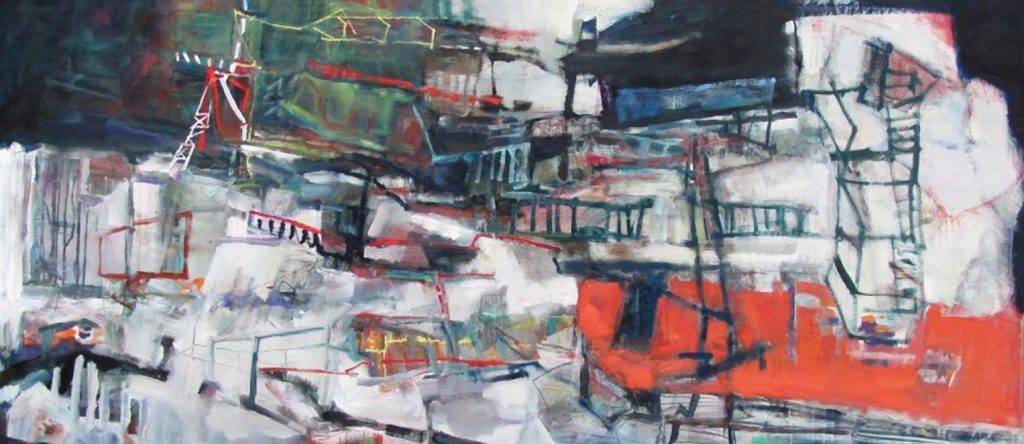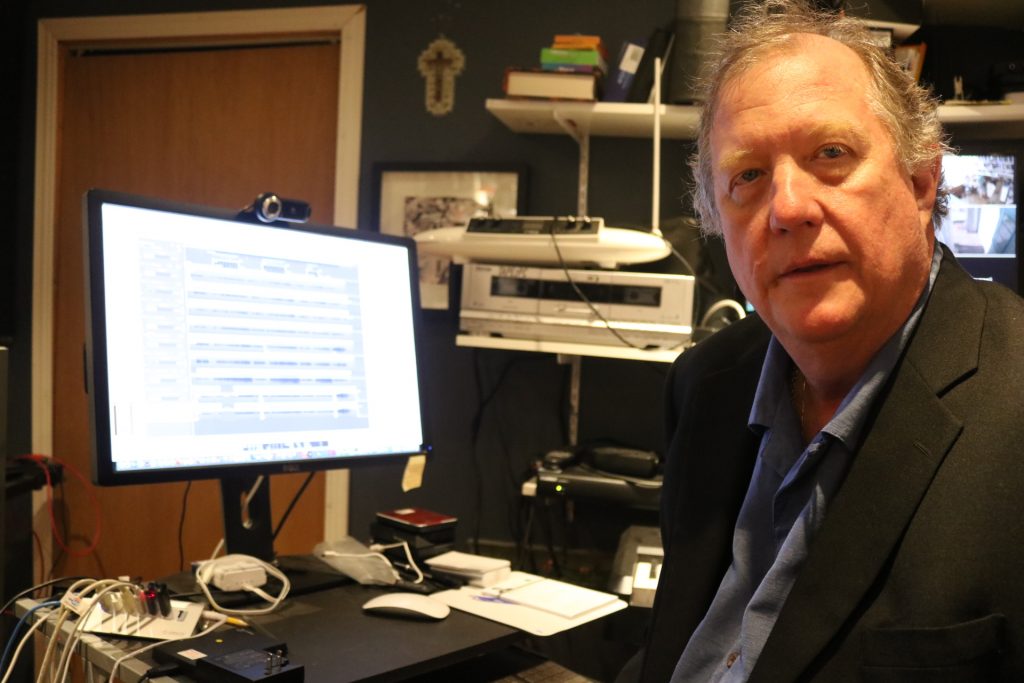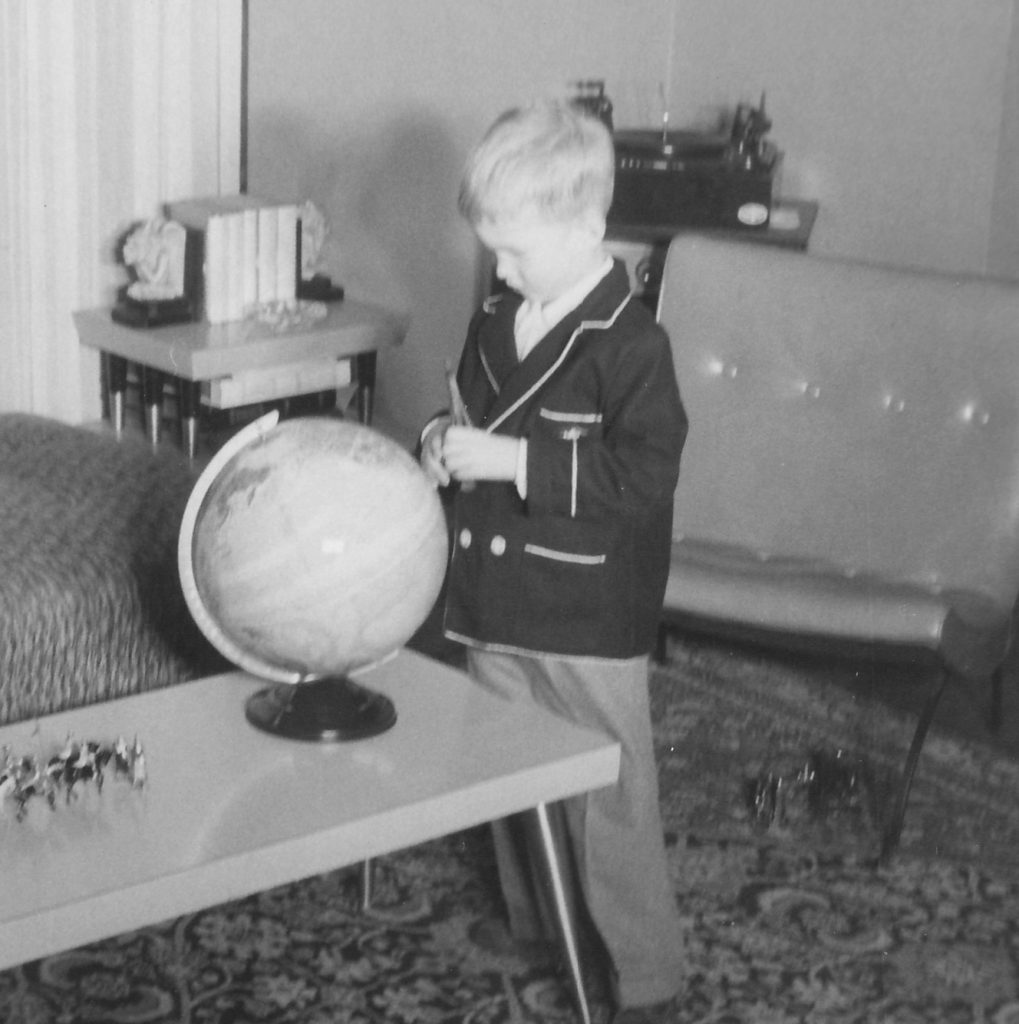Not for Sale

For the documentary Not for Sale, a film about the art of abstract-expressionist painter Selwyn Owen, I wanted to write an underscore that reflected, in musical form, the many influences that Selwyn experienced in his artistic journey through the 20th century.
As well, I wanted to create both an esthetic, not to say chronological, relationship between the art and the music at the various moments in the narrative itself, and engage in a reflective sonic meditation on the emotional content of the story as it unfolded. To this end, I invoked the spirits of John Cage’s prepared pianos for the installations pieces alongside echoes of Brahms for the opening and closing theme while turning to atonality and modern syncopations for the Boxer while finally coming to rest in lyrical introspection for the final chapter of the film, an elegy of sorts to Sel’s work and his memory.
The Grain in the Light

One of the first things one notices about Paul Young’s work is the use of so-called “negative space,” that is to say how the white on the page allows the drawing to come into being before our eyes. In this sense, all drawing might be thought of as an exercise in incompleteness, a process of intense visual selection that has as much to do with what is offered to the eye as what is kept from it.
Paul Young is an avid, some might say obsessive, music listener and collector, and he has amassed a fantastic musical library over his lifetime. He has shared this music and his knowledge of it with many over the years in what has become a ritual for those who come to the famous Tuesday Night table whenever they can.
Paul was also guitar player who made a living, for a while, as a gigging musician and therefore he knows his way around the instrument at a professional level.
In considering the score for this film, all these elements came in to play. The featured instrument would be a guitar. The music would be sparse, as the lines of charcoal on a bright expanse of paper, aiming to fill the ear, as pencil fills the eye. And given the film’s subjects ability to express themselves with intent and passion about both artist and work, the score should not take away from this dominant oral aspect of the project, allowing the incompleteness of motif and melody to realize themselves, later perhaps, in imagination and memory.
When a City Dreams

For this story about a young artist at the beginning of her career, I wanted the score to be light and contain movement and change, much like the city which is the ever-present backdrop and inspiration to the film When a City Dreams… about Anne-Laure Djaballah’s early works. I also wanted the instrumentation to be something that would be culturally relevant to her, so I chose to use synthesizers to create a score which also owes much, in its final execution, to Jim MacDonald’s contribution as a composer and performer.
One of the mesmerizing aspects of Anne-Laure’s work is the tension in her painting between the lived experience of space and place, primarily urban in nature, and our memory of it. This cognitive “almost dé¡à-vu” is also played out in the music by invoking a sense of aural familiarity at the threshold of immediate and instant recognition.
I wanted the pieces to emphasize and support the visual experience of the art as we see it in the film as well engage and heighten the play of surface and depth, which is a dominant feature of her visual work. I also wanted, in the music itself, to capture the spirit of the artist, her elusive yet forceful presence; her boundless curiosity and imagination, her near fatalistic relation to her work expressed in the film as she states: “I didn’t choose art – it chose me…”
About Face
John considered his photographs of great jazz musicians taken for his book Jazz Lives and his love of the music itself as a fundamental aspect of who he was, and perhaps even, how he wanted to live his life. La Vie Bohême had seduced John, by his own account, at an early age and his professional life as a portrait photographer certainly reflected this avocation for spontaneity and difference found in likeness and similarity.
After the first interview with John for the film, during which he spoke of his adventures in music-making with Paul Young in Montréal, it was immediately obvious to me that jazz music should be the spirit of the soundtrack for the documentary About Face – the photographic art of John Reeves. However, the music itself, by its very nature and because of our accepted listening practice to it, was problematic.
Jazz, as a musical form, and improvisation in general, require focussed listening because of the complex nature of the musical experience and underscoring for film is at its best, in most cases, when its effect is nearly subliminal in that it supports the narrative without drawing the viewers attention away from it. It was therefore necessary, when creating the score for the film, to constrain the performative aspects of the music as dictated by the genre and form itself, in favour a highly referential allusion to it, an homage of sorts, while still respecting the essence of the music. Not an easy balancing act, but one I hope was more successful than not in this film.

The scores in these documentaries are the result of my deep appreciation for the artists and their work and are an enduring reflection of my conviction in the redemptive and transformative value of art.
Production Credits
All music composed and performed by Pierre Ouellet and Jim MacDonald – recorded at Venture Music Studios – Toronto –
Published by Venture Publishing 2019 – all rights reserved.
PLEASE NOTE that the jazz compositions in About Face were inspired by Toontracks, specifically JAZZ EZKEYS MIDI. Thanks for the inspiration.
